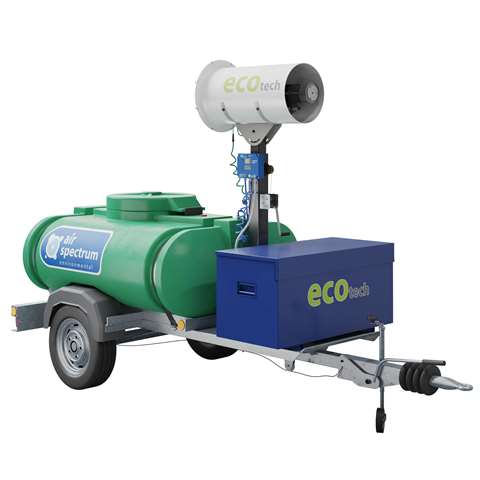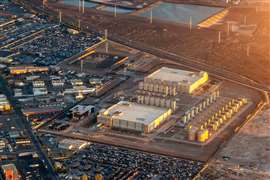Air Spectrum launches zero emissions dust suppression system
21 September 2021
Air quality solutions specialist, Air Spectrum Environmental, has introduced its energy efficient, zero emissions dust suppression misting system, the ecotech Rotary Atomiser (RA).
The system – which was in development for three years – has been designed to meet higher customer demand for sustainable solutions.
 The etoech Rotary Atomiser was in development for three years
The etoech Rotary Atomiser was in development for three years
It is battery powered, rather than using diesel. Air Spectrum says that as a result, it does not generate any harmful emissions or noise pollution, and can operate for approximately eight hours on one single charge.
Using rotary centrifugal energy, the ecotech RA can be programmed to provide over 15 m (49 ft) of misting at a variety of droplet sizes, depending on user requirements. It is designed to work with their range of non-toxic chemical additives for odour control and disinfection, as well as dust control.
The ecotech RA was developed to meet higher customer demand for sustainable solutions, and to fulfil Air Spectrum’s own environmentally responsible agenda. The company aims to become integral to green supply chains in relevant industries like waste, recycling, construction and demolition.
“The ecotech Rotary Atomiser is the result of three years of comprehensive development, and designed to reduce carbon emissions during the dust suppression process,” said Air Spectrum managing director Steve Hunt.
“It represents our commitment to our clients, the environment and prioritising air quality in all our solutions.”





